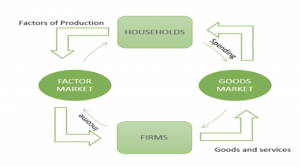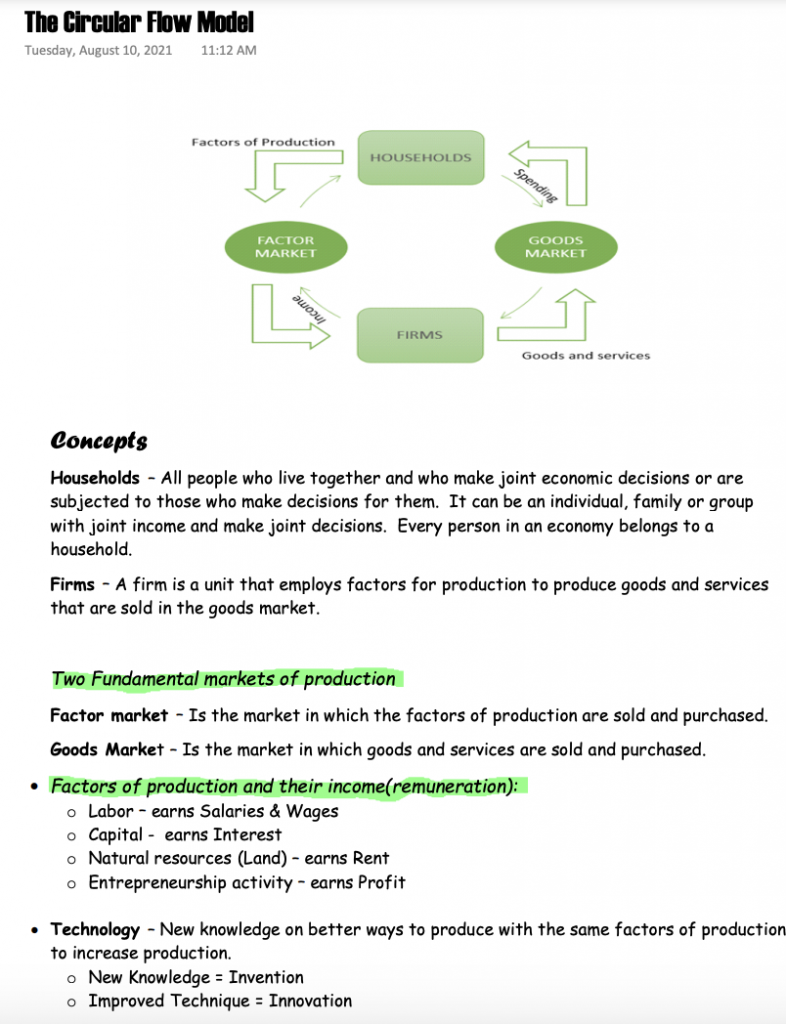Circular Flow Model in Microeconomics
Summary:
The circular flow model illustrates the economic interactions involving households and firms. Households encompass individuals, families, or groups sharing economic decisions. They provide factors of production—labour, capital, natural resources, and entrepreneurship—in exchange for income. Firms, in turn, employ these factors to create goods and services sold in the goods market. Key markets include the factor market, where factors are bought and sold, and the goods market, where products are exchanged. Real and nominal flows are central to the model. Real flows involve goods, services, and factors, while nominal flows pertain to monetary transactions like income and spending. The model’s three core flows are production, income, and spending. These flows are intertwined; changes in production lead to income and spending shifts, forming a cycle. Participants in the model are households and firms. Households are primary factor owners, supplying labour, capital, land, and entrepreneurship to the market. They also demand goods and services and aim to maximize satisfaction. Firms produce goods, combining factors and maximizing profits. Flows between households and firms occur in both factor and goods markets. An increase in spending triggers increased consumption, production, and factor employment. However, the simple circular flow model has limitations—it excludes the government, foreign, and financial sectors. The government provides services and funds via taxes, while the foreign sector involves imports and exports, affecting economic injection and deflation. Additionally, the financial sector handles savings and borrowing. Despite its limitations, the circular flow model captures the essence of economic interactions between households and firms.
Excerpt:
Circular Flow Model in Microeconomics
The Circular Flow Model
Tuesday, August 10, 2021 11:12 AM

Circular Flow Model in Microeconomics
Concepts
Households – All people who live together and make joint economic decisions or are subjected to those who decide for them. It can be an individual, family or group with joint income and make joint decisions. Every person in an economy belongs to a household.
Firms – A firm is a unit that employs factors for production to produce goods and services sold in the goods market.


Reviews